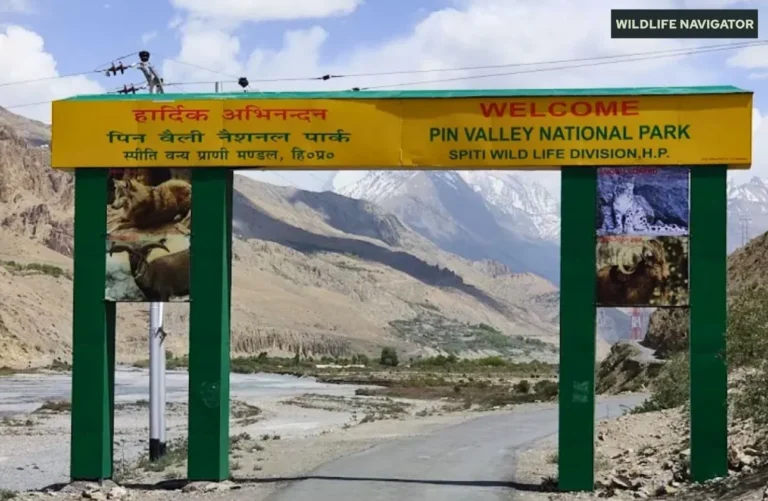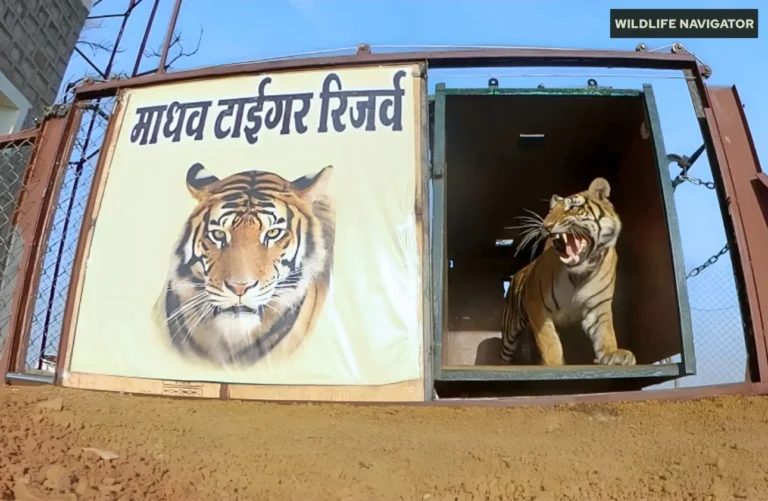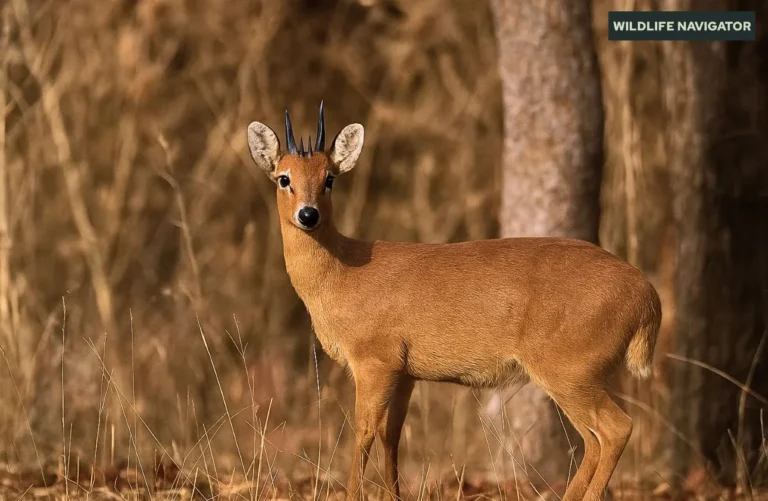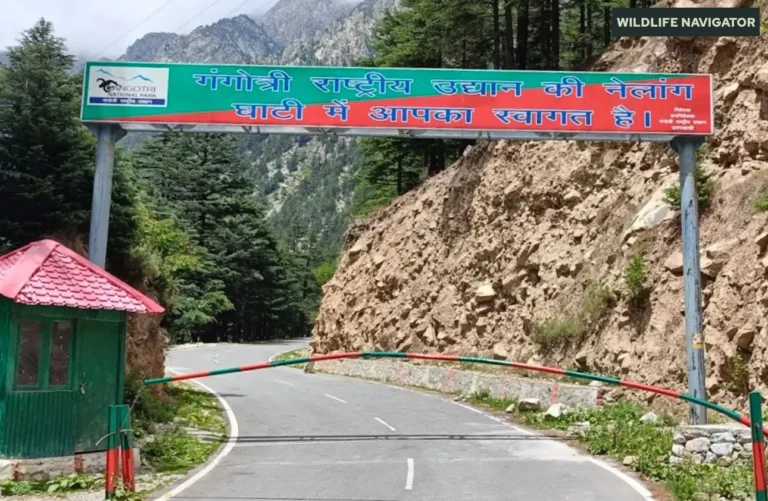Sri Venkateswara Zoological Park, Tirupati – Timings, Safari, Animals & More
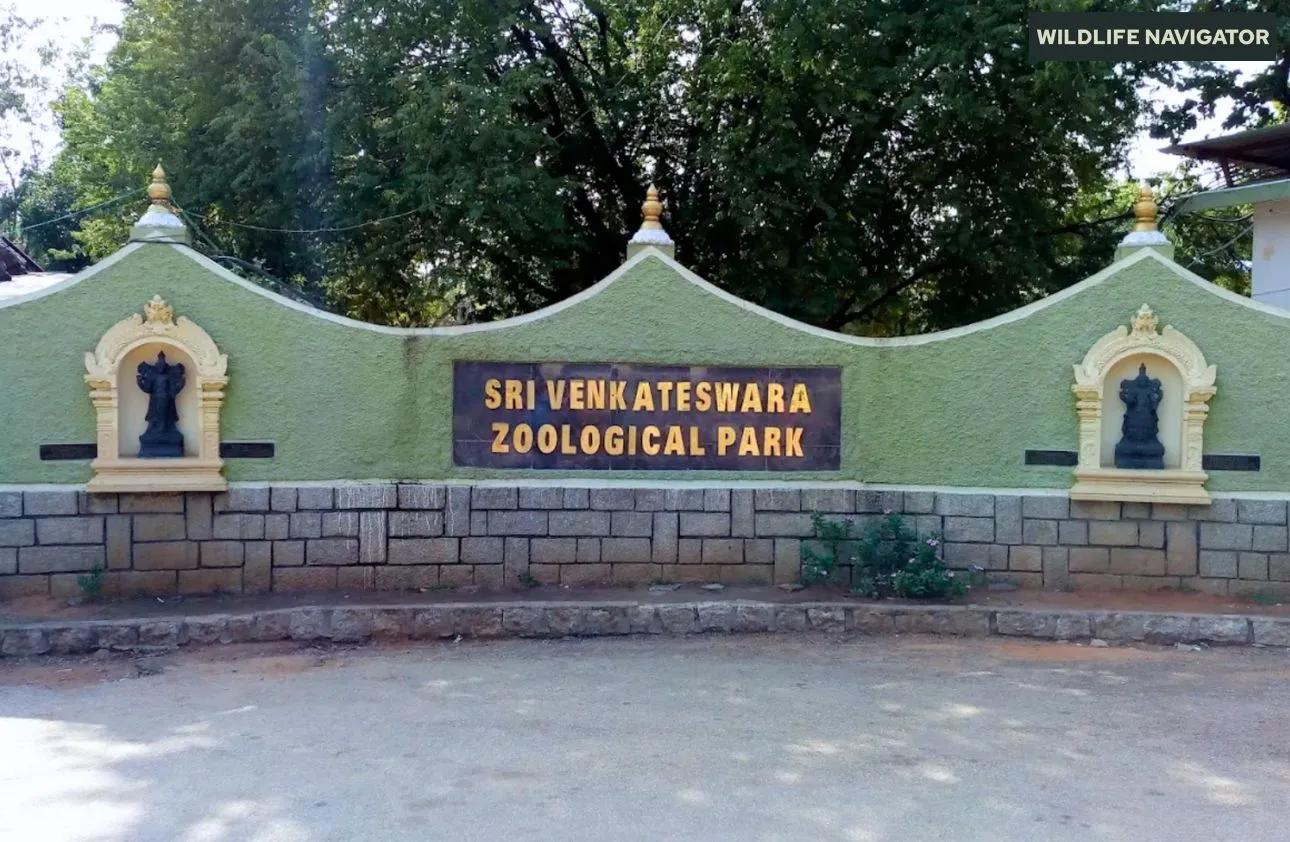
Sri Venkateswara Zoological Park, located in the sacred temple city of Tirupati in Andhra Pradesh, is one of India’s most expansive and naturally designed zoological parks. Spread across the picturesque foothills of the Eastern Ghats, the zoo offers a refreshing blend of wildlife, greenery, and serene landscapes. Established to reflect the rich biodiversity of the region, it provides a unique opportunity for visitors to experience animals in spacious, semi-natural enclosures rather than traditional cages.
The park is especially known for its calm environment, lush vegetation, and the impressive variety of species it preserves—from majestic big cats to vibrant birds and gentle herbivores. For both tourists and wildlife enthusiasts, Sri Venkateswara Zoological Park serves as a peaceful escape into nature, combining recreation with education and conservation awareness. Its commitment to protecting native species and promoting eco-tourism makes it one of the standout wildlife destinations in South India.
History and Establishment
Sri Venkateswara Zoological Park was established in 1987 with the aim of creating a zoological space that mirrors the natural ecosystems found in the Eastern Ghats. Unlike conventional zoos that focus on compact enclosures, this park was envisioned as a vast, open habitat where animals could thrive in conditions close to the wild. Its location near the Tirumala hills was chosen deliberately, as the region is home to rich wildlife diversity and dense forest cover.
The park was developed under the Andhra Pradesh Forest Department as part of a broader mission to conserve native species and support research related to the flora and fauna of southern India. Over the years, the zoo has expanded its facilities, introduced safari experiences, and taken part in several conservation programs. Today, Sri Venkateswara Zoological Park stands as an important centre for wildlife education, public awareness, and breeding of threatened species, all while maintaining harmony with the natural terrain of Tirupati.
Unique Features of the Zoo
Sri Venkateswara Zoological Park stands out for its exceptional design and focus on naturalistic habitats. One of its most striking features is its enormous area, making it one of the largest zoological parks in Asia by spread. Instead of traditional compact cages, the zoo uses vast, open enclosures that closely resemble natural ecosystems, allowing animals to roam freely and display their natural behaviours.
The park is thematically divided to showcase different ecological zones. Areas like “Mayura Vanam” (dedicated to peafowls), “Mrugavani” (focused on deer and herbivores), and other themed sections help visitors understand the diversity of India’s wildlife. The landscape itself is a highlight—thick forests, rocky hillocks, and serene water bodies create a soothing environment for both animals and visitors.
Another standout feature is the interpretation and educational focus, with signages, information boards, and guided awareness programs that help visitors learn about species, conservation importance, and habitat protection. Combined with its peaceful natural setting, the zoo offers a refreshing wildlife experience that feels closer to a forest safari than a conventional zoological park.
Major Animal Species and Highlights
Sri Venkateswara Zoological Park is home to an impressive variety of animals, representing both native and exotic species. Its vast enclosures and naturalistic terrain make wildlife viewing enjoyable, with many animals often seen active and comfortable in their habitats.
Big Cats
- Bengal Tigers – One of the star attractions, often spotted in open enclosures that mimic forest landscapes.
- Lions – The park hosts African lions, offering thrilling sightings during safari rides.
- Leopards – Agile and elusive, leopards are among the most admired carnivores here.
Herbivores
- Sambar Deer
- Spotted Deer (Chital)
- Blackbuck
- Gaur (Indian Bison)
- Nilgai
- Hippopotamus
These gentle giants are housed in large, green zones where they can graze freely.
Primates
- Bonnet Macaques
- Hanuman Langurs
They are commonly seen in open areas, interacting energetically with their surroundings.
Birds
- Peafowls (especially in the Mayura Vanam section)
- Parakeets and Macaws
- Herons, Egrets, and other waterbirds
Their vibrant colours and diverse calls make the aviary sections very lively.
Reptiles
- Crocodiles
- Various snake species
Reptile enclosures are designed with safety and visibility in mind, offering educational value for visitors.
Notable Highlights
- The sighting of White Tigers (if present during the current year).
- A well-maintained Safari Zone for close wildlife encounters.
- Native species of the Eastern Ghats are showcased prominently.
Overall, the park offers a rich wildlife experience that appeals to families, students, photographers, and nature lovers alike.
Divisions and Thematic Zones Inside the Park
Sri Venkateswara Zoological Park is thoughtfully divided into multiple sections, each designed to reflect specific habitats and animal groups. These thematic zones not only enhance the visitor experience but also help in better animal management and conservation.
Herbivore Section
This vast area is home to deer species, antelopes, gaur, and other plant-eating animals. Wide green landscapes, natural shade, and grazing fields allow these animals to roam freely, offering visitors a chance to observe them in a semi-wild environment.
Carnivore Zone
Designed with safety and visibility in mind, this zone features big cats like tigers, leopards, and lions. The enclosures are spacious and enriched to encourage natural behaviours such as climbing, resting on rock platforms, and territorial movement.
Bird Zones and Aviaries
Themed aviaries and open bird habitats add vibrant colour and sound to the park. From peafowls in the iconic Mayura Vanam to waterbirds and exotic parrots, each aviary is arranged to showcase the diversity of avian life.
Mrugavani Section (Herbivore Enclosure Theme)
This special themed section highlights India’s native herbivores through interpretive exhibits and natural surroundings. It’s ideal for educational tours and wildlife awareness programs.
Safari Zones (Lion & Deer Safari)
The park features safari experiences where visitors can travel in protected vehicles for a close look at roaming lions or herds of deer. These safaris provide an immersive experience that feels closer to a natural forest.
Reptile House
Dedicated to reptilian species, this section includes snakes, crocodiles, turtles, and lizards. Information boards help visitors understand their ecological importance and myths are addressed through educational displays.
Interpretation and Knowledge Centres
Scattered throughout the zoo, these centres offer detailed information on habitats, species conservation, and zoological research. They enhance visitor engagement and support educational tours.
The Lion and Deer Safari Experience
One of the biggest attractions at Sri Venkateswara Zoological Park is its exciting Lion and Deer Safari, designed to give visitors a near-natural wildlife encounter. Unlike regular zoo viewing, this safari takes you through designated forest-like zones where animals roam freely within large protected habitats.
Lion Safari
The Lion Safari offers a thrilling ride through a specially created enclosure that mimics natural grasslands and rocky terrains. Visitors board a secure, caged safari vehicle that moves along a fixed route, providing safe and clear views of majestic lions as they walk, rest, or interact with their pride members. For many, this is the closest experience to witnessing these big cats in the wild, making it a must-do activity in the park.
Deer Safari
The Deer Safari is a calmer, more serene experience. Herds of spotted deer, sambar, and blackbuck graze peacefully across open meadows. As the safari vehicle moves slowly through the habitat, visitors can observe their behaviour, social interactions, and alert postures up close. This safari is particularly enjoyable for families and kids, offering a gentle introduction to wildlife observation.
What to Expect
- Dedicated safari vehicles with proper safety features.
- Knowledgeable drivers or staff who ensure smooth navigation.
- Common sightings include multiple lions, lionesses, and herds of deer.
- Duration typically ranges from 10–20 minutes per safari.
Tips for Visitors
- Avoid loud noises during the ride.
- Keep your hands inside the vehicle at all times.
- Best timings: early mornings or late afternoons for active animal behaviour.
- Cameras and mobile phones are allowed but should be used responsibly.
The safari experience adds an adventurous element to the entire visit, making it one of the highlights of Sri Venkateswara Zoological Park.
Conservation and Research Initiatives
Sri Venkateswara Zoological Park plays an important role in wildlife conservation across Andhra Pradesh. Beyond being a recreational destination, the zoo actively participates in breeding, rescue, and scientific efforts aimed at preserving native biodiversity.
Conservation Breeding Programs
The zoo maintains specialised programs focused on endangered and vulnerable species. These include native animals of the Eastern Ghats and select exotic species that require protected environments. The breeding enclosures are designed to ensure proper genetic diversity, natural pairing, and nurturing spaces for cubs or offspring.
Wildlife Rescue and Rehabilitation
As a key support centre for the Forest Department, the zoo often receives injured, orphaned, or displaced wild animals from surrounding areas. After veterinary care and rehabilitation, the goal is to release healthy individuals back into the wild whenever possible.
Educational & Awareness Campaigns
The zoo regularly conducts awareness drives, school programs, nature education camps, and workshops. These initiatives aim to teach visitors—especially students—about conservation ethics, responsible tourism, and the importance of protecting natural habitats.
Research & Documentation
Collaborations with universities, researchers, and forest officials help the zoo contribute to scientific knowledge. Studies on animal behaviour, habitat enrichment, species adaptation, and ecological health are part of its ongoing commitments.
Habitat Enrichment Efforts
To ensure animals live in mentally and physically stimulating environments, the zoo constantly improves its enclosures. Tree planting, climbing structures, water features, and natural shelters help animals express natural behaviours, which is crucial for welfare.
Focus on the Native Eastern Ghats Wildlife
Since the park lies at the foothills of the Tirumala range, special emphasis is given to species native to the region. This supports long-term conservation goals and helps maintain ecological balance.
Through these initiatives, Sri Venkateswara Zoological Park has become more than just a zoo—it is an active centre for conservation and wildlife protection in southern India.
Visitor Facilities and Services
Sri Venkateswara Zoological Park ensures a comfortable and informative experience for visitors by offering a range of essential facilities and thoughtfully designed services. These amenities make the visit smooth, family-friendly, and educational.
Shuttle and Battery Operated Vehicles
Given the zoo’s vast size, battery-operated vehicles or shuttle services are often available to help visitors explore different sections without excessive walking. These eco-friendly rides are especially useful for senior citizens, children, and families.
Interpretation Centres
The zoo houses interpretation and educational centres that provide detailed information about animals, their natural habitats, and conservation significance. These centres include visual displays, models, maps, and interactive boards designed to enhance learning.
Rest Shelters and Seating Areas
Well-placed rest spots with benches and shaded shelters allow visitors to take breaks comfortably. These are particularly helpful during hot weather when walking between enclosures.
Drinking Water and Refreshment Points
Clean drinking water stations are installed throughout the park. Small snack points or refreshment stalls may also be available near entry zones, providing basic snacks, packaged items, and beverages.
Washrooms and Hygienic Facilities
The zoo maintains decent restroom facilities at strategic locations, ensuring hygiene and convenience for all visitors.
Kids’ Zones and Educational Spaces
Interactive learning areas or small children’s activity spots offer fun engagement for younger visitors. These areas may feature animal-themed educational boards, miniature exhibits, or safe play zones.
Guided Interpretation
Some days or seasons may include guided visits conducted by zoo educators or staff. These guided sessions help visitors understand animal behaviour, habitat importance, and conservation messages in a more structured manner.
Parking Facilities
A designated parking area near the entrance ensures easy access for private vehicles and tourist buses.
Safety and Security Measures
CCTV monitoring, trained staff, clear directional signage, and emergency assistance points maintain a safe environment throughout the park.
All these facilities together make Sri Venkateswara Zoological Park not only wildlife-rich but also visitor-friendly, ensuring a smooth and enjoyable experience for tourists, families, and school groups.
Entry Fee, Timings and How to Reach
Planning your visit to Sri Venkateswara Zoological Park becomes easier with clear information about ticket rates, operational hours, and travel connectivity. The zoo is conveniently located near Tirupati, making it easily accessible for pilgrims and tourists exploring the region.
Entry Fee
(Note: These may vary slightly depending on the season or updates by the zoo authorities.)
- Adults (12 years and older): ₹70
- Children (3–12 years): ₹30
- Foreign visitors (12 years and older): ₹200
- School students (1st–10th standard, 3–15 years): ₹10
Timings
- Opening Hours: Usually from 9:00 AM to 5:00 PM.
- Closed On: The zoo remains closed on Tuesdays for maintenance.
Morning visits often provide better chances of active wildlife sightings.
How to Reach
Sri Venkateswara Zoological Park is located around 10–12 km from Tirupati city, nestled on the road leading toward Tirumala. The journey itself is scenic, passing through forested areas and hill landscapes.
By Road
- Well-connected by local buses, autos, and taxis from Tirupati.
- Private vehicles can also reach the zoo easily, with parking available near the entrance.
By Train
- Tirupati Railway Station is the nearest major railhead, connected to major cities like Chennai, Bengaluru, Hyderabad, and Vijayawada.
From the station, visitors can hire taxis or buses to reach the zoo.
By Air
- Tirupati International Airport (Renigunta) is about 30–35 km away.
The airport is well-connected to metro cities, and taxis are readily available for the onward journey.
Nearby Landmarks
- Tirumala Temple
- Kapila Theertham
- Chandragiri Fort
These attractions can be planned along with your zoo visit for a complete day trip.
Best Time to Visit and Travel Tips
A well-planned visit to Sri Venkateswara Zoological Park ensures a more enjoyable wildlife experience. From climate considerations to practical tips, here’s everything you should know before heading in.
Best Time to Visit
- October to March:
This is the ideal season as the weather remains pleasant and suitable for long walks and safari rides. Animals are often more active during these months. - Early Mornings & Late Afternoons:
These are the best times of the day for spotting animals, especially big cats, as temperatures are cooler. - Avoid Peak Summer:
From April to June, the region becomes quite hot and humid, making it tiring for visitors and reducing animal activity.
Travel Tips for Visitors
- Wear Comfortable Clothing: Opt for light, breathable clothing, a hat or cap, and comfortable walking shoes since the zoo covers a large area.
- Carry Essentials: Bring water bottles, sunscreen, sunglasses, and a small umbrella if visiting during the summer.
- Photography Tips:
- Use zoom lenses for capturing distant animals.
- Avoid flash photography inside enclosed areas.
- Mornings give the best natural light for wildlife photos.
- Respect Wildlife: Do not feed animals or provoke them. Maintain a safe distance and observe quietly.
- Follow Signboards & Instructions: Many zones are strictly marked. Always follow zoo guidelines and staff instructions, especially during safaris.
- Plan for a Half-Day Visit: The park is large, and it generally takes 3–4 hours to explore all major sections comfortably.
Nearby Attractions Around Tirupati
A visit to Sri Venkateswara Zoological Park can be combined with several iconic attractions in and around Tirupati. Whether you’re a pilgrim, history enthusiast, or nature lover, the region offers multiple points of interest to enrich your trip.
- Tirumala Venkateswara Temple: One of the most visited pilgrimage sites in the world, the sacred Tirumala Temple lies atop the Tirumala hills. Known for its spiritual significance and ancient architecture, it attracts millions of devotees annually. Many visitors combine their zoo trip with temple darshan.
- Kapila Theertham: Located at the foot of Tirumala hills, Kapila Theertham is a famous Shiva temple situated next to a natural waterfall. The serene setting and spiritual ambience make it a popular stop for tourists and pilgrims.
- Chandragiri Fort: A historic fort built during the Vijayanagara Empire, Chandragiri Fort is known for its impressive architecture, museum, and scenic hilltop views. It’s an excellent destination for history lovers and photography enthusiasts.
- Talakona Waterfalls: Located within Sri Venkateswara National Park, Talakona is the tallest waterfall in Andhra Pradesh. Surrounded by dense forests and trekking trails, it’s a great option for nature lovers and adventure seekers.
- Sri Venkateswara National Park: For those who wish to explore natural landscapes beyond the zoo, the national park offers trekking, scenic viewpoints, waterfalls, and a rich diversity of flora and fauna.
- ISKCON Tirupati: A peaceful spiritual centre offering cultural programs, devotional music, and traditional architecture. It’s a relaxing place for families and devotees.
- Regional Science Centre: If you’re travelling with children or students, the Tirupati Regional Science Centre provides interactive exhibits, planetarium shows, and educational displays.
- Deer Park (Tirumala): A popular spot near Tirumala known for its calm environment and easy sightings of spotted deer.
Combining these attractions with your visit to Sri Venkateswara Zoological Park can make for a memorable full-day or weekend itinerary.
Conclusion
Sri Venkateswara Zoological Park is more than just a zoo—it is a refreshing blend of conservation, education, and natural beauty. Set against the scenic backdrop of the Tirumala hills, the park provides a unique opportunity to witness wildlife in spacious, eco-friendly habitats that closely resemble their natural surroundings. From thrilling lion safaris to peaceful herbivore zones and vibrant aviaries, the zoo offers something for every type of visitor.
Its commitment to conservation and species protection makes it an important centre for wildlife preservation in southern India. Whether you’re a nature lover, wildlife photographer, student, or a family seeking an enriching outing, the park delivers a wholesome and memorable experience.
A visit to Sri Venkateswara Zoological Park not only brings you closer to India’s diverse wildlife but also inspires a deeper appreciation for the need to protect and preserve the natural world.
